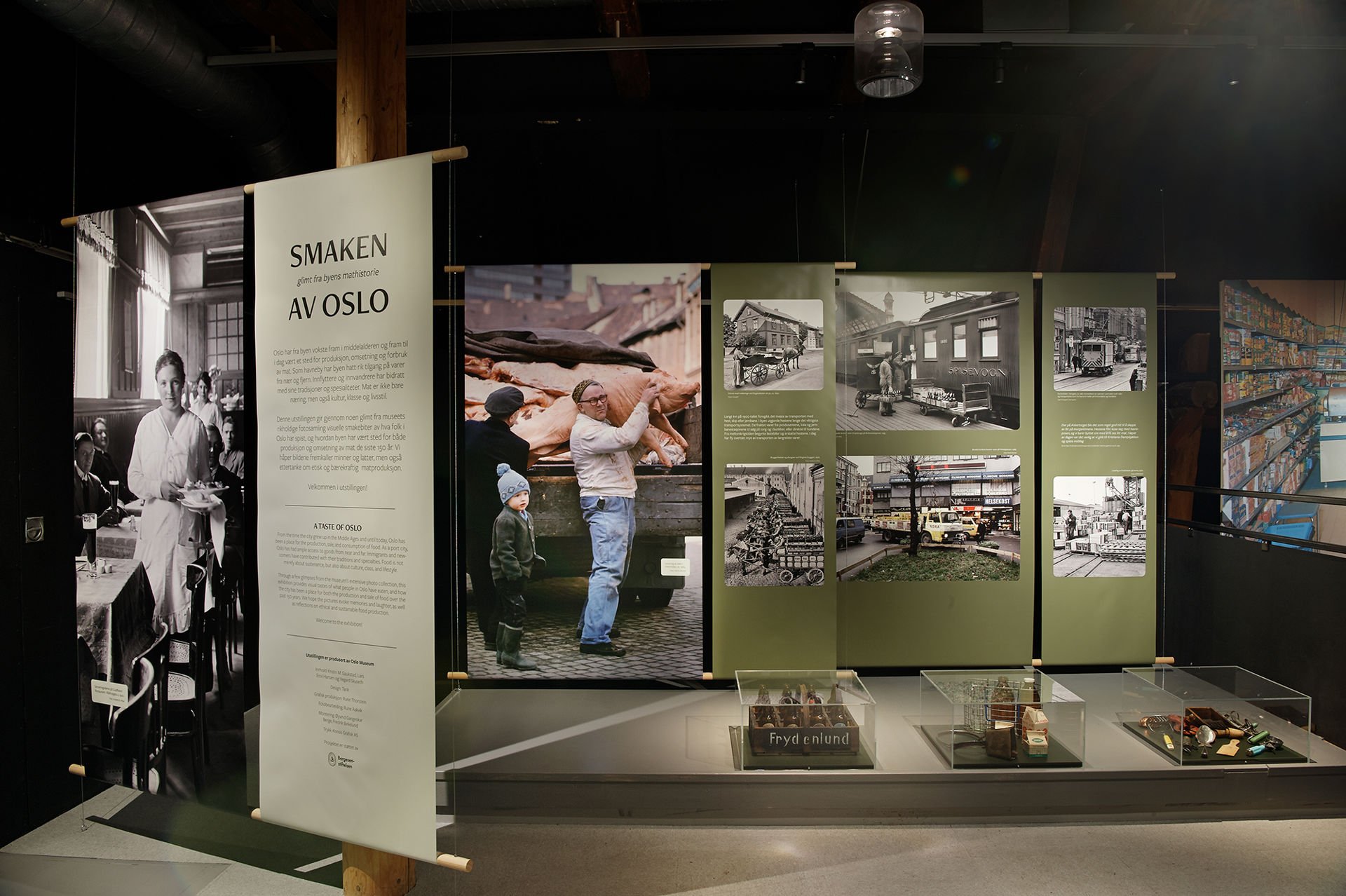
In August 1624, large parts of the old city of Oslo were reduced to ashes. Get to know the new city that emerged.

Food is a central part of human life – and of urban history. In this photo exhibition, you will be served samples of Oslo's food history over the past 150 years.
Museum of Oslo, Frognerveien 67
12 May 2023–15 September 2024
Get to know the food history of the city based on the museum’s photo collection. What can the collection tell us about food in Oslo during this period? And how do the photographs reflect social and cultural changes in society?
In this photo exhibition, you will be served samples of Oslo's food history over the past 150 years.
Photo: Atelier Rude / Oslo Museum






Tuesday and Wednesday: 11am–4pm
Thursday: 11am–6pm
Friday, Saturday and Sunday: 11am–4pm
Adults: NOK 120,-
Students: NOK 60,-
Children and youth (under 26): Free admission
Free admission for everyone on the first Thursday of the month.
Tickets include entrance to the Museum of Oslo and the Theatre Museum.
Address: Halvdan Svartes gate 58, 0266 Oslo
Take tram 12 or bus 20 to Frogner plass, or all subway lines to Majorstuen

The Museum of Oslo is beautifully located at Frogner Manor in the Frogner park, together with the Theatre Museum. Here, you can familiarize yourself with the history behind today’s diverse city. Experience a variation of exhibitions about Oslo’s history, urban development, the city’s inhabitants, and current issues facing the Oslo of today.
You can also visit our pleasant café and gift shop.

In August 1624, large parts of the old city of Oslo were reduced to ashes. Get to know the new city that emerged.
Six artists based in Senegal and Norway are behind the exhibition Ndiakhass – which means patchwork in Wolof.

